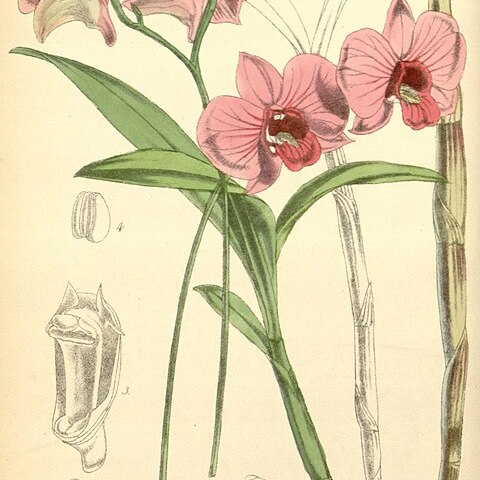Pseudobulbs cylindrical, 200–1200 × 10–15 mm, green or purplish, leafy in upper third. Leaves 3–5 per pseudobulb, 100–150 × 30–35 mm, often with purplish margins. Racemes 200–400 mm long, 2–20-flowered. Flowers 25–30 × 50–80 mm, usually lilac-purple, rarely white, bluish or pinkish, with darker purple labellum which lacks white blotch. Dorsal sepal 25–30 × 9–11 mm. Lateral sepals 20–25 × 9–11 mm. Petals 25–30 × 25–30 mm. Labellum c. 24 × 20 mm, dark purple; lateral lobes erect, veined; midlobe decurved, with hairy patch and 4 or 5 ridges.
An orchid.

